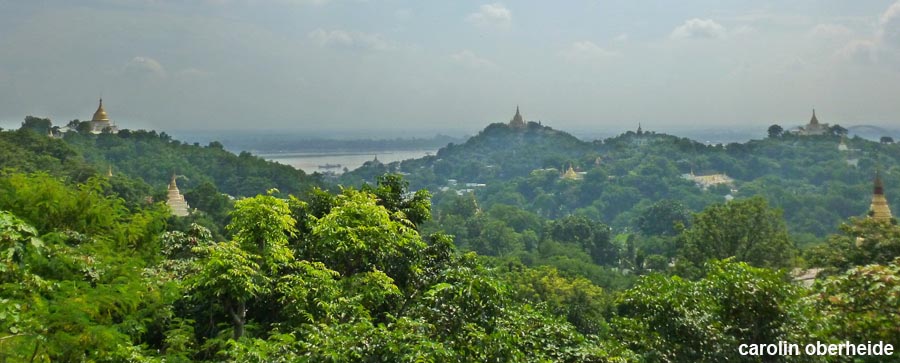
1. Mandalay
Mandalay was founded in 1857 as the last royal city on Irrwaddy. It is the second largest city of Myanmar after Yangon with about 1.6 million inhabitants. Behind the city limits rise the Mandalay Mountains from the hot, dry plain. Just 50 km away, Pyin U Lwin is already 1000 meters higher and served as a summer retreat for the British. Mandalay is today the center of Burmese culture. Many traditions and arts have survived from the time of the kings. In Mandalay there are still traditional handicrafts, such as stonemasons, woodcarvers and goldsmiths. The most famous attraction is the former Royal Palace, the Mahamuni Buddha and the Kuthodaw Pagoda.
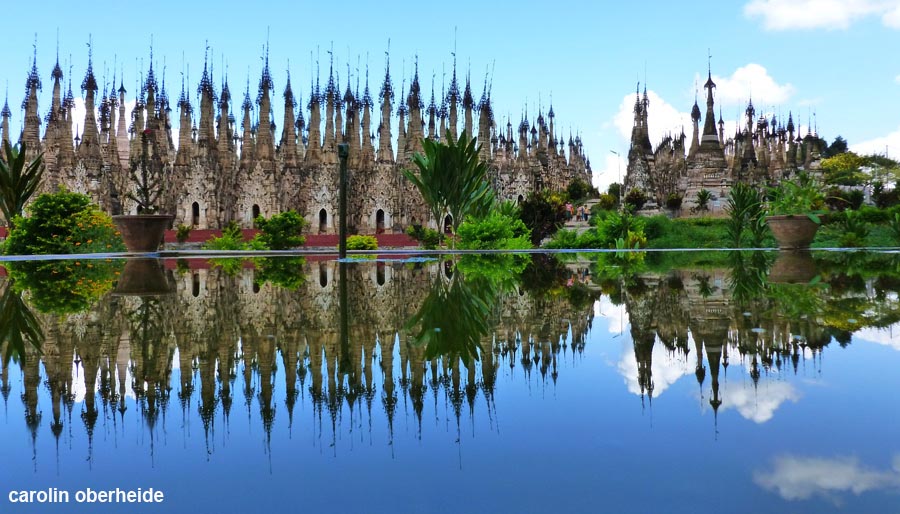
2. Kakku
The small Pa-O village Kakku can not be visited for a long time, only since the opening of Myanmar in 2001 tourists are allowed to visit the area. Kakku is famous for its pagoda field, on which since 300 BC. Pagodas are built. On an area of approx. 300 x 150 m over 2,000 pagodas were built. Many of the stupas and pagodas have already been restored.
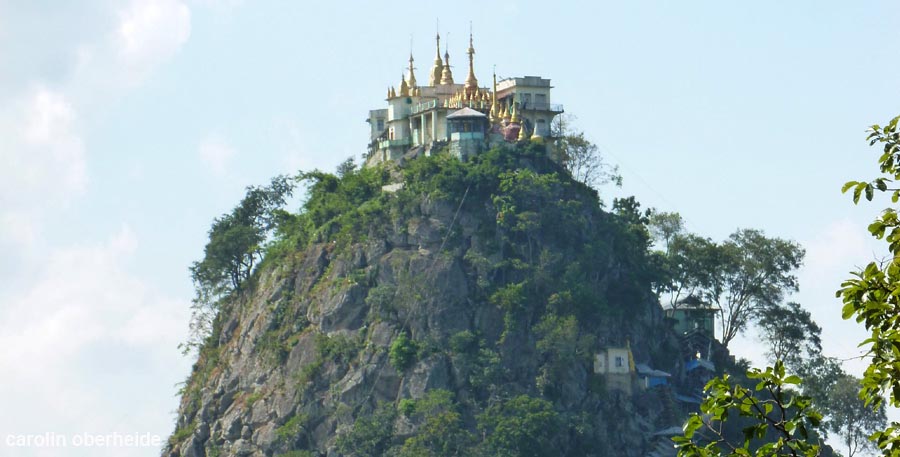
3. Mount Popa
The "Mount Popa" is an extinct volcanic cone. At its edge is a single 737 m high rock called "Taung Kalat", on which there is a temple. If you want to climb the steep stairs should pay attention to the thieving monkeys and since you have to walk a part of the route barefoot, do not enter their excrement (pathogens). The "flower mountain" Mount Popa is considered the abode of the "Nats". The "Nats" are the protective gods of the Burmese. The volcano "Mount Popa" is a national park with many beautiful flowers and butterflies.

4. Inle Lake
Inle Lake is the second largest lake in Myanmar. It is located at an altitude of 875 m in the mountains of the Shan state. Inle Lake is famous for its one-leg rowers, who have their hands free to fish with this technique. On the lake there are floating fields, which consist of mud and water plants and are attached with piles on the lake bottom. In the villages around the lake there are many markets where you can discover all the plant diversity of the region. Here one also meets the numerous ethnic groups of the Burmese highlands.
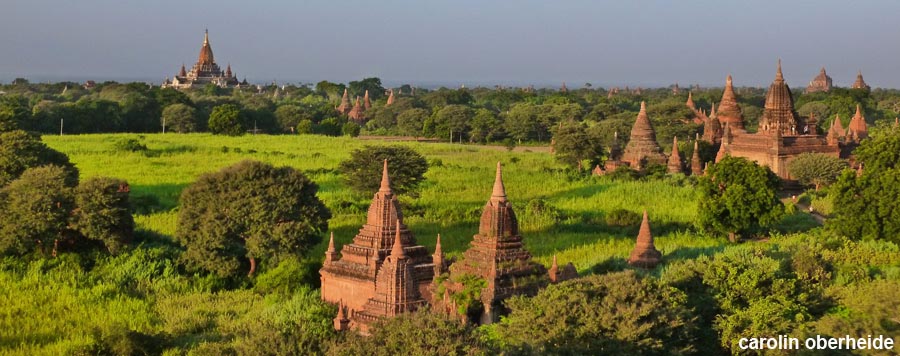
5. Bagan
Bagan is a deserted royal city, which was built around the year 167. In 1044 King Anawrahta came to power and introduced Theravada Buddhism. The Bagan Empire grew to the size of today's Myanmar. Bagan was then one of the largest cities in the world. There were around 6,000 temples, of which about 2,000 are still preserved today. When Kublai Kahn conquered the city in 1287, Bagan was abandoned. Today, the pagodas and stupas are free in the landscape, some have been restored.
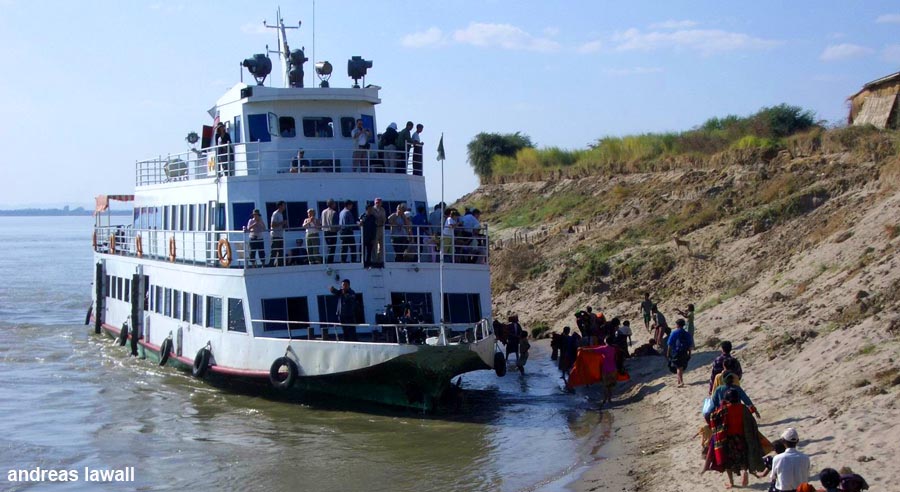
6. River Cruise on the Irrawaddy
The Irrawaddy is the lifeblood of Myanmar. The river rises in Tibet (China) and flows after 2100 km in the Indian Ocean. On the Irrawaddy lie the cities of Yangon, Bagan, Mandalay and numerous temples. For a long time, electricity was the country's most important traffic route. For tourists it is worthwhile at least to stretch back on the river. However, the boat trip on the Irrawaddy takes a long time. From Mandalay downstream to Bagan, the ship needs around 12 hours for 200 km.
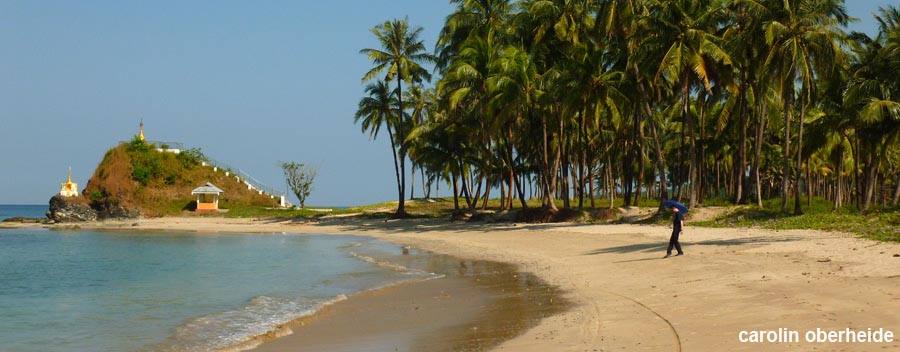
7. Chaung Thar Beach
Myanmar's most beautiful beaches are on the west coast of the country on the Bay of Bengal. Yangon is about 200 km to Chaung Thar. Long sandy beaches with palm trees and small temples extend north of the village. In Chaung Thar there are already some hotels and resorts but from mass tourism, the place is still far away.
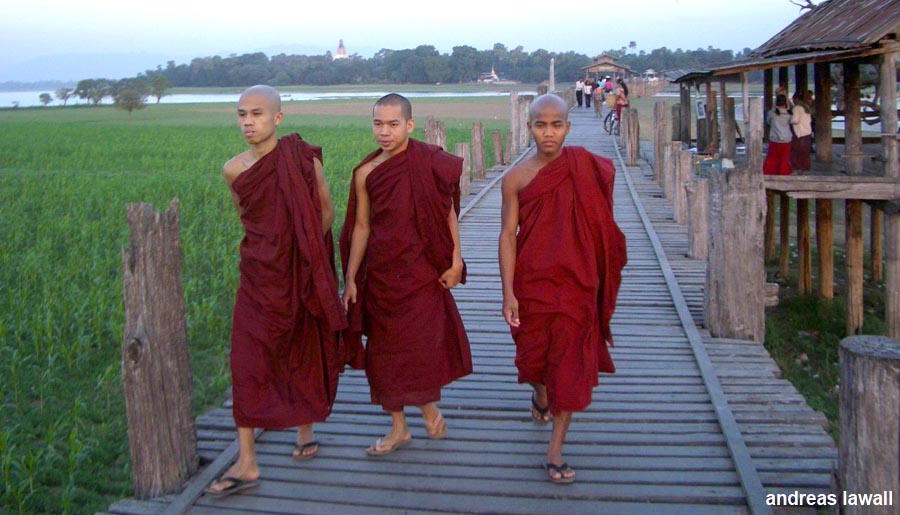
8. U-Bein Bridge
On the southern outskirts of Mandalay is the ancient royal city of Amarapura. In Amarapura at Taung Tha Man Lake is the U Bein Bridge. The world's longest teak bridge connects the two shores. It was built in 1850 by Mayor U-Bein from the remains of the former capital. On both banks are Buddhist temples, so you can see many monks walking on the bridge. On the approximately 1.2 km long wooden bridge, there are small pavilions, which are well attended in the evenings. The lake is famous for its romantic sunset.
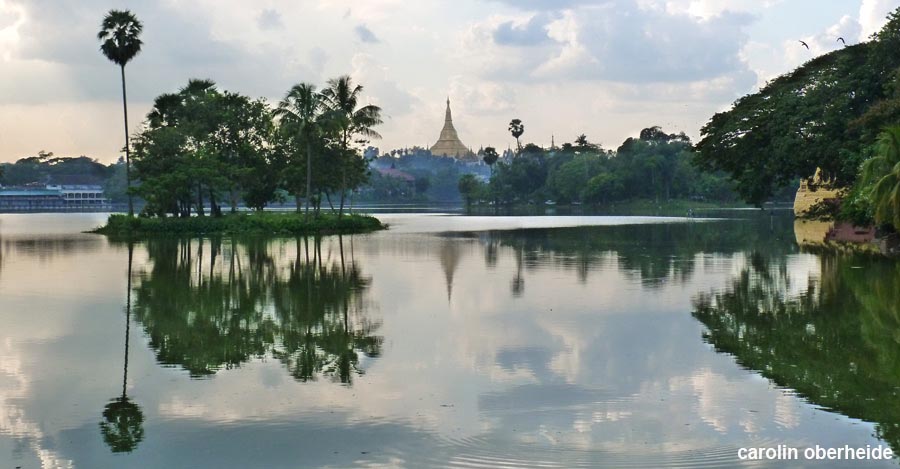
9. Yangon
Yangon is no longer the capital of Myanmar since the 2005 military government elected Naypyidaw as the seat of government. Nevertheless, Yangon is the largest city in Myanmar, with over 5 million inhabitants. Yangon was formed as an army camp to end an uprising in the south of the country. Yangon is called "End of the fight". The British colonial administration called the city "Rangoon". Since the independence of Burma (today Myanmar) the city is called Yangon. The main attraction is the golden "Shwedagon Pagoda" and the old town of Yangon with temples, colonial charm, food stalls and colorful markets.
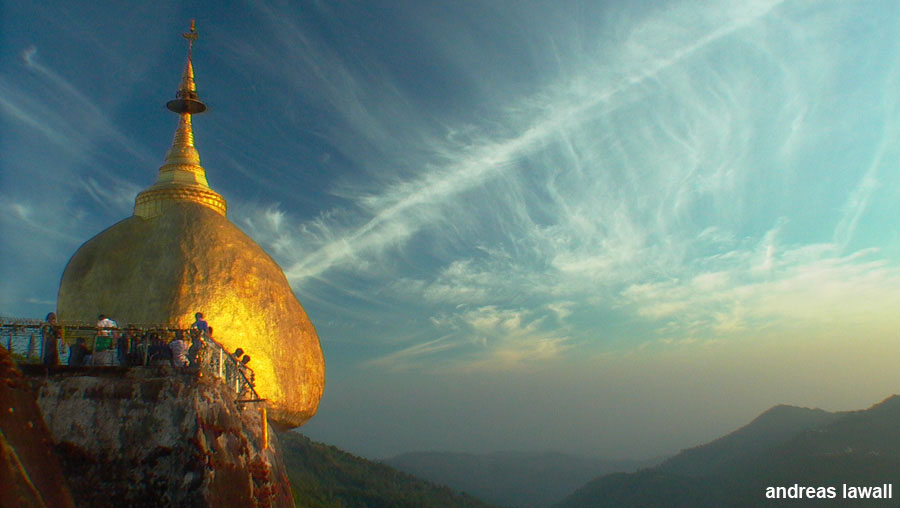
10. Golden Rock
The "Golden Rock" is one of Myanmar's most spectacular sights. It is located in the mountains east of Yangon. The "Kyaik-tiyo-pagoda" stands on a rock that balances threateningly over the abyss. According to legend, the pagoda was built by King Tissa in the 11th century. He got a hair of Buddha only on condition that he would keep it safely in a pagoda standing on a rock salvaged from the depths of the sea. In the "Kyaik-tiyo-pagoda" is therefore the hair of Buddha, which holds the "Golden Rock" in balance.
Map Myanmar Top 10
ads
Top 10 Myanmar
Welcome to Myanmar
The regiopia travel guide presents the top 10 sights of Myanmar. Discover an exciting travel destination with unique cities, beaches and landscapes.
Myanmar is one of the most beautiful travel destinations in Southeast Asia.
ads
ads


